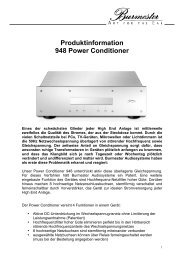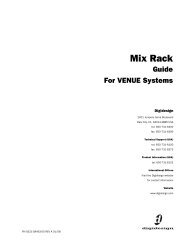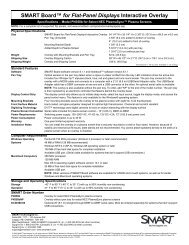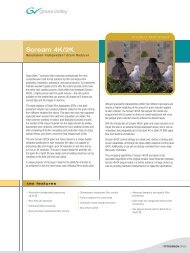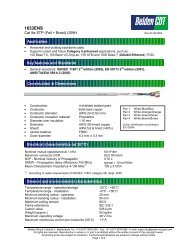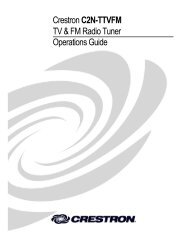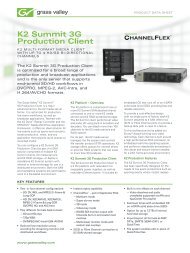Quickfly Operating Manual - Meyer Sound Laboratories Inc.
Quickfly Operating Manual - Meyer Sound Laboratories Inc.
Quickfly Operating Manual - Meyer Sound Laboratories Inc.
Create successful ePaper yourself
Turn your PDF publications into a flip-book with our unique Google optimized e-Paper software.
CARE, USE, AND INSPECTION OF CONNECTORS<br />
The physical integrity of <strong>Meyer</strong> <strong>Sound</strong>'s QuickFly system<br />
depends on proper inspection, maintenance, and use. For<br />
additional information, refer to ANSI B30.9, OSHA<br />
1910.184, or appropriate documents from your local regulatory<br />
body.<br />
Care<br />
Connectors and chains used in the QuickFly system require<br />
careful storage and regular maintenance.<br />
· Store in a clean, dry place.<br />
· To avoid corrosion, oil before prolonged storage.<br />
· Do not heat the connectors; this will alter the thermal<br />
treatment.<br />
· Do not plate or change surface finish.<br />
Use<br />
To protect both operators and system components, observe<br />
these precautions :<br />
· Before use, inspect the chain and all attachments following<br />
the instructions detailed in Inspection.<br />
· Do not exceed the working load limit. Any of the factors<br />
listed here can reduce the working load:<br />
· Acceleration in rate of lifting arrays can produce<br />
dangerous overloading.<br />
· Variation in the angle of the load: as the angle<br />
decreases, the working load presented to the connector<br />
will increase.<br />
· Twisting , knotting , or kinking subjects connector<br />
23<br />
links to unusual loading and decreases the effective<br />
working load.<br />
· Use for purposes other than those for which the<br />
product is intended can reduce the effective working<br />
load.<br />
· Free the chain of all twists, knots, and kinks.<br />
· Center load in the hook(s); hook latches must not support<br />
the load.<br />
· Avoid sudden jerks when lifting and lowering<br />
· Balance all loads; avoid tipping of loads.<br />
· Use pads around sharp corners.<br />
· Do not drop loudspeakers on chains or connectors.<br />
Inspection<br />
Inspect connectors and chain links regularly and keep a<br />
record of all chain inspections.<br />
· Before inspecting, clean with a non-acid/non-caustic<br />
solvent so that marks, nicks, wear, and other defects are<br />
visible.<br />
· Inspect each link and connector part for:<br />
· Twists or bends.<br />
· Nicks or gouges.<br />
· Excessive wear at bearing points.<br />
· Stretch.<br />
· Distorted or damaged master links, coupling links<br />
or attachments, especially spread in the throat<br />
openings of hooks.<br />
· Use paint to plainly mark each link or attachment showing<br />
any conditions listed here to indicate rejection;<br />
remove from service until properly repaired.






